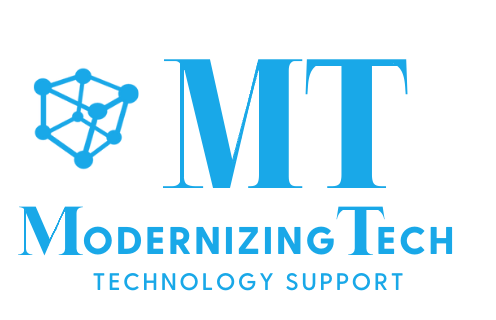Transitioning your organization’s devices to Windows 11 and adopting cloud-native management like Intune is a strategic move that aligns with Microsoft’s future roadmap. Support for Windows 10 is scheduled to end on October 14, 2025. While Microsoft offers an Extended Security Updates (ESU) program that provides additional security patches for up to a year after support officially ends, giving organizations extra time to plan their migration.
Preparing now helps ensure your organization remains secure, compliant, and operationally efficient.
Migrating at scale involves a series of well-planned steps—verifying hardware compatibility, updating existing systems, reconfiguring management policies, and deploying new software.
In this article, we’ll review recommendations, best practices, and official resources to help you achieve a seamless migration that minimizes disruption and maximizes the benefits of Windows 11.
- Assess Hardware Compatibility
- Ensure Devices Are Updated to the Latest Windows 10
- Synchronize Identities and Prepare for Cloud Management
- Transition from Group Policy to Intune Strategically
- Plan a Phased Deployment for Device Upgrades
- Assess and Migrate Applications Carefully
- Transition Devices to Microsoft Entra ID
- Monitor and Validate Throughout the Migration
- Leverage Official Resources for Support
Assess Hardware Compatibility Thoroughly
Before beginning your upgrade, it’s essential to verify that all target devices meet Windows 11 hardware requirements. This includes features like TPM 2.0, Secure Boot, CPU specifications, RAM, and storage capacity. Use tools such as Microsoft Endpoint Analytics or Configuration Manager to evaluate devices at scale, helping you identify and address hardware gaps early—reducing the risk of post-deployment issues.
Ensure Devices Are Updated to the Latest Windows 10 Version
Devices should be running at least Windows 10, version 22H2, with all available updates installed. Automate this process using tools like Windows Autopatch, Configuration Manager, or WSUS. Confirm update compliance through Quality Update Status Reports to minimize upgrade failures and ensure compatibility with Windows 11.
Synchronize Identities and Prepare for Cloud Management
Maintaining consistent identity management is critical. Use Microsoft Entra Connect to synchronize user accounts and device information from your on-premises Active Directory to Microsoft Entra ID. This synchronization establishes a foundation for managing devices seamlessly post-migration and ensures users retain access to resources without interruption.
Transition from Group Policy to Intune Strategically
If your organization relies heavily on Group Policy, now is an ideal time to transition management to Microsoft Intune. Use Group Policy Analytics within Intune to analyze existing policies and determine which can be migrated or replaced. Create a plan to implement Intune configuration profiles and PowerShell scripts to replace unsupported policies, and test these in pilot groups before organization-wide deployment.
Avoid conflicts by thoroughly testing policy overlaps. Ensure that Intune policies do not conflict with existing GPOs, and double-check that policies target the correct groups.
Plan a Phased Deployment for Device Upgrades
Use Windows Autopatch to create deployment rings—groups of devices that will be upgraded sequentially. This phased approach minimizes disruption and allows for troubleshooting before full deployment. Regularly monitor progress via Autopatch reports to track compliance, device health, and rollout status, making adjustments as needed.
Assess and Migrate Applications Carefully
Review all applications currently deployed across your environment. Export lists including versions and dependencies, assess their compatibility with Windows 11, and plan their deployment via Intune:
- Use Microsoft Win32 Content Prep Tool to package Win32 applications.
- Test deployments on pilot devices to identify issues early.
- Remove obsolete applications and retire legacy deployment methods from Configuration Manager after successful migration.
Consult Microsoft App Assure if you encounter compatibility issues with critical applications, ensuring minimal disruption to end-users.
Transition Devices to Microsoft Entra ID
Moving devices from traditional domain join to Entra ID join can be accomplished via methods like device refresh or reimaging:
- Device Refresh: Cost-effective and minimally disruptive, suitable for most devices.
- Reimaging: Reinstall Windows 11, join to Entra ID, then restore user data.
Use OneDrive Known Folder Move to automatically back up user data—this reduces the risk of data loss during migration.
Monitor and Validate Throughout the Migration
Throughout the process, leverage tools like Windows Autopatch reports and Microsoft Endpoint Manager to monitor deployment progress, device compliance, and health status. Regular reviews enable early identification of issues and help keep your migration on schedule.
Leverage Official Resources for Support
Microsoft offers extensive documentation, tools, and support channels to assist with your migration:
Official Windows 11 upgrade cloud migration guide
Microsoft’s App Assure for application compatibility issues
Best practices for cloud management and device onboarding
Following an official, structured approach ensures your migration to Windows 11 is secure, compliant, and minimally disruptive. By leveraging the right tools, planning carefully, and continuously monitoring progress, your organization can realize the full benefits of Windows 11 and cloud-native management with Microsoft Intune.


Leave a Reply